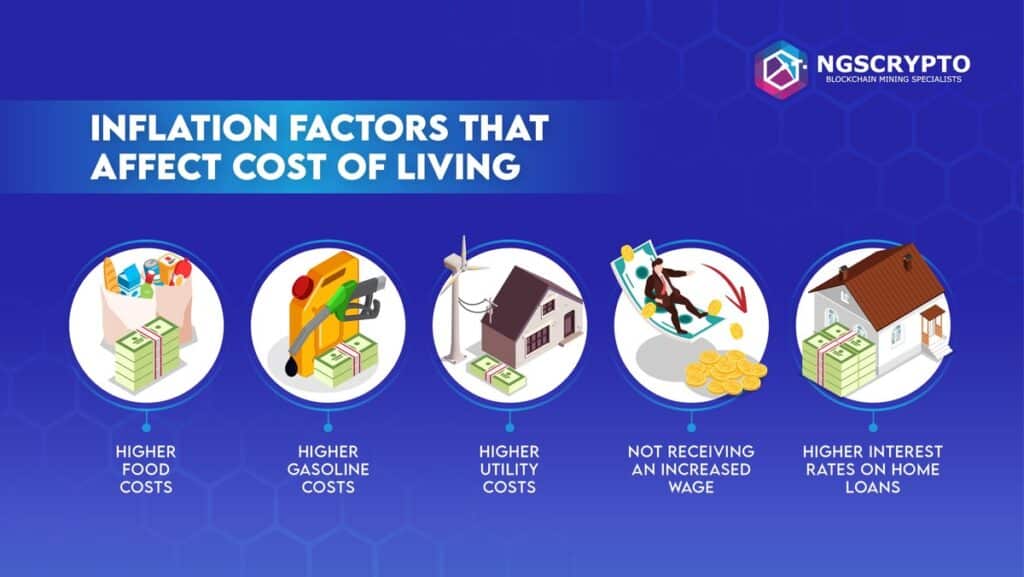NGS Crypto is an Authorised Reseller of NGS Group Blockchain Mining Packages
NGS Crypto is an Authorised Reseller of NGS Group Blockchain Mining Packages


Written by Katya Richardson
Share this article
When it comes to retirement planning, too many people make the same mistakes, resulting in unpleasant financial surprises later on. Ever had that feeling of nerves when you think about your retirement? Well, it’s natural for retirement to seem a bit overwhelming that’s why the choices we make now will shape our future comfort.
Many Australians, despite their best efforts, fall into common traps when planning for those golden years. To avoid these retirement mistakes, it’s best to have a strategy in place that helps you steer clear of common errors and set yourself up for a relaxed and rewarding retirement.
Now let’s learn about the five most common mistakes and how to avoid them.
Even though it is impossible to foresee future financial obstacles, people continue to make the following five classic retirement blunders:
Create a strategy that takes into account your predicted lifespan to avoid undermining your retirement and running out of money. Before deciding how much to save, consider your desired retirement age, location, health, and lifestyle choices.
Why are all of these seemingly insignificant details so crucial? Because our lifestyles, the items we need, and even our habits change exponentially. You may need to change your spending habits to fit in with a new budget that will lead to a more comfortable retirement. By doing this, you can help better set yourself up for the future and avoid these common retirement issues.
According to a survey by the Australian National University, most Australians agree that retirement income does not necessarily have to be equal to their current income. The majority of Australians estimate that their retirement income should equal 70% of their present income.
As per data from the Australian Bureau of Statistics, the present national median personal income stands at $1,800 per week and the average annual salary is $68,900 at the moment.
To be eligible for the full-age pension as a single person, your income must not exceed $204 per fortnight (approximately $5,304 per year). However, you can still qualify for a partial Age Pension if your earnings are below $2,332.00 per fortnight (approximately $60,632 per year).
The ASFA Retirement Standard provides estimates of the annual budget required by retirees to maintain either a “modest” or a “comfortable” standard of living. These estimates include expenses related to various aspects of life, such as housing, health care, transportation, food, and leisure activities.
Here is a brief overview of the two categories within the ASFA Retirement Standard:
| ASFA Retirement Standard | Annual Living Costs | Weekly Living Costs |
|---|---|---|
| Couple - Modest | $45,946 | $883.57 |
| Couple - Comfortable | $70,806 | $1,361.65 |
| Single - Modest | $31,861 | $612.82 |
| Single - Comfortable | $50,207 | $965.51 |
To ensure a good retirement despite a shortage, take steps to get back on track and secure a comfortable future. Some ways you can do this are:
In addition to insurance, have you given retirement health insurance any thought?
Medicare is a comprehensive public healthcare system that allows everyone with a Medicare card to obtain free medical care in a public hospital. The bulk of medically required procedures are provided for free for citizens, permanent residents, and some travellers.
The majority of the expense of the medical care that private patients receive is covered by a health fund because the majority of them have private health insurance. However, the majority of private procedures still entail out-of-pocket expenses even after the health insurance benefit.
Here’s a list of both public and private healthcare options, each with its own set of advantages and disadvantages. Keep these factors in mind when you’re planning your finances.
| Public and private healthcare pros and cons | ||
|---|---|---|
| Public healthcare will not cover additional cover. | Offer coverage for services not fully covered by Medicare, such as dental care, physiotherapy, and optical services. | |
| Some out-of-hospital treatments, such as GP and specialist visits, as well as some medications, are covered. | Private health may cover a broader range of treatments and medications, including newer and more expensive options that may not be available through the public system. | |
| As a public patient, you will frequently be required to share a room with other patients. | Private health often covers the cost of a private room during hospital stays, offering more comfort and privacy. | |
| In the public healthcare system, elective procedures may have longer waiting lists. | Private health insurance can provide faster access to treatments, reducing the impact on your health. | |
| For your treatment in public healthcare, you will be assigned a doctor or surgeon. | Allows you to choose your preferred doctor or specialist for procedures, ensuring you receive personalized care. | |
While your super fund and age pension may appear to be sufficient at present time, additional investments help to mitigate the impact of inflation and other costs in the future.
Inflation and changes in interest rates are just part of how our economy works. Inflation is the gradual increase in the overall price level of goods and services in an economy. It can be caused by various factors, including increased demand, higher production costs, and wage pressures. That’s inflation at play, and it means our dollars don’t stretch as far as they used to.
Australia’s annual inflation rate between June 2022 and early 2023, is approximately 6.93%. This means that, on average, prices for goods and services in Australia increased by approximately 6.93% over this one-year period.
The median dwelling price for Australia now sits at $728,831. Some economists predict a 40-50% growth in Australia’s house prices between now and 2030, That would put Australia’s median dwelling price at around $1.1 million in 2030.
The rising cost of living may force you to reconsider your retirement plans. It is an excellent concept to include inflation into your investment plan. To hedge against inflation, think about boosting your savings, contributing to your retirement account, and diversifying your holdings.

Financial experts commonly recommend diversifying investments, suggesting that individuals distribute their funds across a range of investment options. Because diversification reduces risk, it makes sense to diversify a financial portfolio for wealth management.
Look around for a financial organisation that provides a variety of financial goods and investment options. Consider purchasing investment products that are simple to sell or convert to cash.

In the journey towards securing your financial future, avoiding these common retirement planning pitfalls is paramount. Remember, meticulous planning and informed decisions today can pave the way for a comfortable and worry-free retirement tomorrow. By steering clear of these significant missteps, you’re well on your way to a retirement that’s everything you’ve envisioned.
The information presented on this website is general information only. It should not be taken as constituting professional advice from the website owner – NGS Crypto PTY LTD (NGS Crypto). Any information regarding past performance and returns contained on this website should not be construed or interpreted as a prediction or opinion as to future performance and returns. NGS Crypto is not a financial adviser. All views and observations expressed by NGS Crypto on this website are for information purposes only, are general in nature and should not be treated as investment or financial advice of any kind.
NGS Crypto is an authorised reseller of NGS Group blockchain mining packages. The information presented on this website (https://ngscrypto.com) is general information only. It should not be taken as constituting professional advice from the website owner – NGS Crypto PTY LTD (NGS Crypto). Any information regarding past performance and returns contained on this website should not be construed or interpreted as a prediction or opinion as to future performance and returns. NGS Crypto is not a financial adviser. All views and observations expressed by NGS Crypto on this website are for information purposes only, are general in nature and should not be treated as investment or financial advice of any kind. Before making an investment in crypto assets, you should consider seeking independent legal, financial, taxation or other such professional advice to check how the information on this website relates to your unique circumstances. NGS Crypto is not liable for any loss caused, whether due to negligence or otherwise arising from the use of, or reliance on, the information provided directly or indirectly, by use of this website. You can view our full terms & conditions by clicking here.
NGS Crypto is not affiliated, associated, authorized, endorsed by, or in any way officially connected with this NGS Super (ABN 73 549 180 515).
© 2024 NGS Crypto
NGS Crypto is an Authorised Reseller of NGS Group
| Cookie | Duration | Description |
|---|---|---|
| cookielawinfo-checkbox-analytics | 11 months | This cookie is set by GDPR Cookie Consent plugin. The cookie is used to store the user consent for the cookies in the category "Analytics". |
| cookielawinfo-checkbox-functional | 11 months | The cookie is set by GDPR cookie consent to record the user consent for the cookies in the category "Functional". |
| cookielawinfo-checkbox-necessary | 11 months | This cookie is set by GDPR Cookie Consent plugin. The cookies is used to store the user consent for the cookies in the category "Necessary". |
| cookielawinfo-checkbox-others | 11 months | This cookie is set by GDPR Cookie Consent plugin. The cookie is used to store the user consent for the cookies in the category "Other. |
| cookielawinfo-checkbox-performance | 11 months | This cookie is set by GDPR Cookie Consent plugin. The cookie is used to store the user consent for the cookies in the category "Performance". |
| viewed_cookie_policy | 11 months | The cookie is set by the GDPR Cookie Consent plugin and is used to store whether or not user has consented to the use of cookies. It does not store any personal data. |